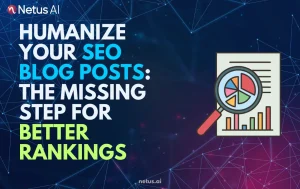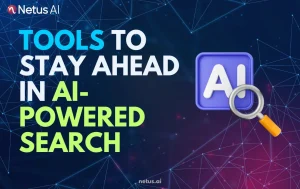
Google’s Helpful Content Update: An SEO Writer’s Guide | NetusAI
SEO Writer’s Guide to Google’s Helpful Content Update Keeping up with Google’s algorithm changes can feel like a relentless game of whack-a-mole. Just when you
How to Detect Plagiarism in Your Code: Efficient Techniques and Tools

Content writer and editor for Netus.AI
How to Detect Plagiarism in Your Code. The world of software development is constantly evolving, with numerous applications designed to improve people’s lives. As a software developer, one critical concern is identifying and avoiding plagiarism in code. The expansion of computer science education has made programming skills more accessible to people of all ages, increasing the likelihood of unintended plagiarism in academic and professional settings.
In academic institutions, students may unknowingly plagiarize code when completing tests, papers, programming assignments, and presentations. Such practices can undermine academic integrity and negatively impact a student’s reputation. Research papers may be cancelled, and students might face loss of grades. It is crucial to learn how to detect and prevent plagiarism in programming code to maintain the highest standards of integrity within the software development community.
Code plagiarism occurs when someone uses another person’s programming code in their work without proper acknowledgement. This can happen in various programming languages and can involve copying classes, variables, methods, or even entire source code. It is vital to respect the original author’s work and avoid such acts of cheating or reproducing code without appropriate attribution.
In some cases, code plagiarism might be accidental, often due to a lack of understanding of citation standards or inability to access the proper sources. In such situations, it is advisable to seek guidance from instructors, who can provide clarification on proper techniques and citation styles.
It is crucial to comprehend copyright rules and citation methods before undertaking any project to prevent accusations of plagiarism. Familiarizing oneself with these guidelines will ensure that projects adhere to ethical standards and respect the intellectual property of others.
The field of computer science largely depends on the innovation and creativity of software engineers, who come up with groundbreaking ideas that result in cutting-edge technologies and a variety of daily use applications. To maintain the integrity of this field, it is essential to address code plagiarism and promote original work.
Detecting plagiarism in programming languages can be divided into two categories: document plagiarism and source code plagiarism. Document plagiarism involves copying content from web pages like images and text, while source code plagiarism involves replicating programming code.
Identifying plagiarism through manual proofreading can be time-consuming and inefficient. Online tools offer an effective alternative for detecting plagiarism in programming languages. Let’s look at some methods and tools used to detect and prevent plagiarism:
Using Comparison Tools
Various online similarity checker tools can be used to identify similarities in programming languages, just as there are document comparison tools to detect plagiarized content in text documents.
Specialized Tools
In order to highlight plagiarism cases, it’s essential to first locate the source code. A source code plagiarism detector, such as Copyleaks, specializes in finding the source code during the plagiarism detection process.
Use of Copyright
Creators of programming codes often apply copyright protection to their work to control the access and usage of their code and ensure it is being used properly.
Use of Open Sources
While many online sources claim to check code plagiarism, it’s essential to know which ones are reliable. Open sources may not always be ideal, as they often come with copyright restrictions. Nevertheless, academic and professional environments can utilize others’ work appropriately, as long as the original creator receives proper credit.
Originality Checker
A computer code originality checker enables users to identify similarities in programming code by comparing multiple documents. This feature is currently available in beta testing for Python language, encouraging students to write their code rather than copying from others when completing academic assignments.
Checking Plagiarism with Copyleaks
Copyleaks offers a dedicated source code plagiarism checker that can easily detect plagiarism in programming codes. The latest feature, called Codeleaks, identifies content theft with a simple file upload, helping users pinpoint both intentional and accidental plagiarism.
Over the years, Copyleaks plagiarism detection tools have been used by colleges, universities, individual bloggers, and publishers. The software supports various programming languages, including C++, JavaScript, HTML, Python, and Java, enhancing its services and preventing content theft and copyright infringement.
The increasing reliance on technology has led to the integration of digital services such as online shopping, bill payments, and social media into our daily lives. While providing convenience, this reliance also brings about potential risks.
In the realm of coding and programming, innovative applications are continually being developed. Unfortunately, alongside the beneficial applications, there are others that misuse data, infringe on personal information, or contribute to online fraud.
Digital platform users need to remain vigilant to prevent falling victim to such harmful activities. It is crucial to have guidelines on safely using these platforms, as they help protect users’ interests. Similarly, when it comes to programming, it is essential to establish guidelines that address code plagiarism.
In the fight against plagiarism, measures such as incorporating a badge or obtaining written permission for code reuse can help uphold ethical standards. By fostering awareness and adopting best practices, the programming community can support a trustworthy and secure digital landscape.
Yes, several free tools can help with detecting plagiarism in programming code. Some of these tools include Copyleaks and MOSS. These tools can help identify copied or modified code, ensuring you maintain academic or professional integrity.
Online code plagiarism detection services can be quite effective in identifying similar or directly copied code. For instance, HackerRank uses machine learning for detecting code plagiarism, continuously improving their confidence levels with self-learning capabilities. However, the effectiveness depends on the specific tool and their algorithm’s ability to analyze and compare source code files.
Tools like Turnitin are primarily designed to detect plagiarism in textual content rather than source code. However, some services may offer features designed to detect code-related plagiarism. It’s best to use tools designed specifically for detecting code plagiarism for more accurate results.
Yes, various code plagiarism checkers can be found on GitHub. These tools are often open-source and customizable, allowing users to detect plagiarized code in different programming languages. It’s essential to research each tool’s suitability for your specific needs and language before using them.
Yes, plagiarism applies to programming and source code. It is crucial to maintain originality in your coding projects, whether for academic, professional, or personal purposes. Developing your programming skills and knowledge base will help ensure that your code is original to avoid potential plagiarism issues.

SEO Writer’s Guide to Google’s Helpful Content Update Keeping up with Google’s algorithm changes can feel like a relentless game of whack-a-mole. Just when you

Can AI Content Be Safe for SEO in 2025? Let’s start with the question of keeping every content strategist, SEO pro and blogger awake at

Humanize Your SEO Blog Posts: The Missing Step for Better Rankings You’ve done everything by the book. Your keyword research is impeccable. Your meta descriptions

How to Pass AI Detection Tests as an SEO Writer Let’s paint a familiar picture. You’ve just finished a blog post. The headline is sharp,

Why Your AI SEO Blog Isn’t Ranking (And How to Fix It) You embraced AI for your blog. The promise was intoxicating: high-quality content, published

The Modern SEO Writer’s Stack: Tools to Stay Ahead in AI-Powered Search Remember the days when “SEO writing” conjured images of frantic keyword stuffing, awkward
@ 2024 Netus AI.